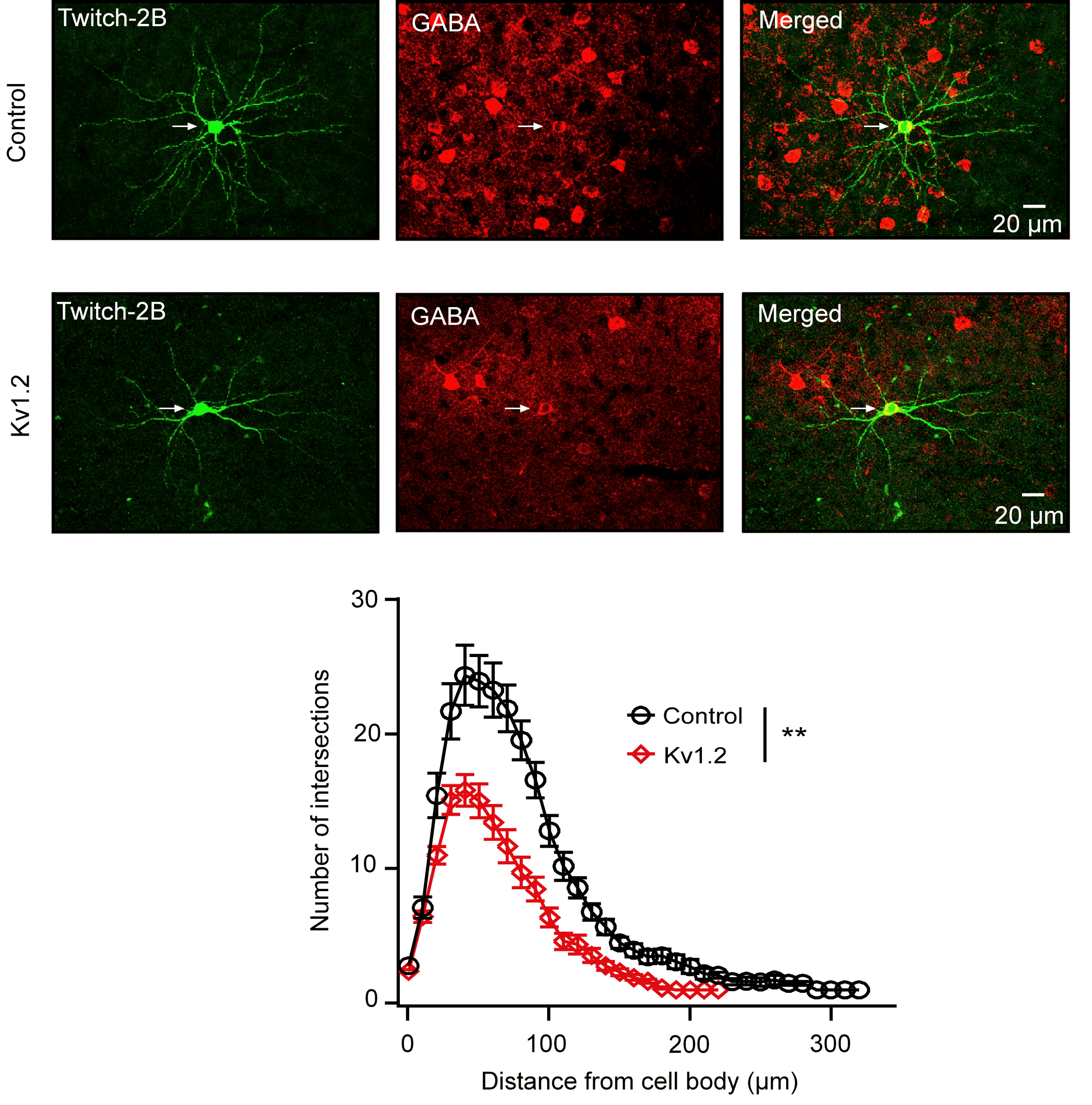K+ channel-mediated retarded maturation of interneurons and its role in neurodevelopmental disorders
 De novo mutations in genes encoding K+ channels are implicated in many severe neurodevelopmental disorders. Specifically, mutations in KCNA2, encoding the Shaker-type voltage-gated K+ channel Kv1.2, and KCNJ2, encoding the inwardly rectifying K+ channel Kir2.1, associate with focal and generalized epilepsies, brain atrophy, autism, ataxia and hereditary spastic paraplegia (Syrbe et al., 2015; Masnada et al., 2017; Cheng et al., 2021). Complicated forms of the disease often include other neurological manifestations, such as cognitive impairment/intellectual disability, aggressiveness, irritability, dysarthria, cerebellar atrophy, polyneuropathy, or amyotrophy (Helbig et al., 2016; Masnada et al., 2017). Strikingly, the gain-of-function mutations of Kv1.2 channels, which are supposed to promote neuronal repolarization and termination of neuronal firing, caused more severe symptoms in terms of epilepsy, ataxia, and intellectual disability than the loss-of-function mutations, which are supposed to promote neuronal hyperactivity (Syrbe et al., 2015; Allen et al., 2020). Likewise, gain-of-function mutations in a Kir2.1 channel were shown to be associated with autism spectrum disorder (Cheng et al., 2021). Moreover, a recent study has shown that Kir2.1 is highly expressed in medulloblastoma, one of the most common childhood malignant brain tumors (Wang et al., 2022). In these cells, Kir2.1 promoted tumor cell invasion, metastasis, as well as epithelial-mesenchymal transitions, and higher levels of Kir2.1 expression were associated with the significantly shorter lifespan of the patients.
De novo mutations in genes encoding K+ channels are implicated in many severe neurodevelopmental disorders. Specifically, mutations in KCNA2, encoding the Shaker-type voltage-gated K+ channel Kv1.2, and KCNJ2, encoding the inwardly rectifying K+ channel Kir2.1, associate with focal and generalized epilepsies, brain atrophy, autism, ataxia and hereditary spastic paraplegia (Syrbe et al., 2015; Masnada et al., 2017; Cheng et al., 2021). Complicated forms of the disease often include other neurological manifestations, such as cognitive impairment/intellectual disability, aggressiveness, irritability, dysarthria, cerebellar atrophy, polyneuropathy, or amyotrophy (Helbig et al., 2016; Masnada et al., 2017). Strikingly, the gain-of-function mutations of Kv1.2 channels, which are supposed to promote neuronal repolarization and termination of neuronal firing, caused more severe symptoms in terms of epilepsy, ataxia, and intellectual disability than the loss-of-function mutations, which are supposed to promote neuronal hyperactivity (Syrbe et al., 2015; Allen et al., 2020). Likewise, gain-of-function mutations in a Kir2.1 channel were shown to be associated with autism spectrum disorder (Cheng et al., 2021). Moreover, a recent study has shown that Kir2.1 is highly expressed in medulloblastoma, one of the most common childhood malignant brain tumors (Wang et al., 2022). In these cells, Kir2.1 promoted tumor cell invasion, metastasis, as well as epithelial-mesenchymal transitions, and higher levels of Kir2.1 expression were associated with the significantly shorter lifespan of the patients.
The article is accessible on the following DOI: https://doi.org/10.4103/1673-5374.386409
